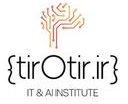Having just spent some time in reviewing and learning further about MLSecOps (Fantastic Course on LinkedIn by Diana Kelley) I wanted to share my thoughts on the rapidly evolving landscape of technology, the integration of Machine Learning (ML) and Artificial Intelligence (AI) has revolutionized numerous industries.
However, this transformative power also comes with significant security challenges that organizations must address. Enter MLSecOps, a holistic approach that combines the principles of Machine Learning, Security, and DevOps to ensure the seamless and secure deployment of AI-powered systems.
The state of MLSecOps today
As organizations continue to harness the power of ML and AI, many are still playing catch-up when it comes to implementing robust security measures. In a recent survey, it was found that only 34% of organizations have a well-defined MLSecOps strategy in place. This gap highlights the pressing need for a more proactive and comprehensive approach to securing AI-driven systems.
Key challenges in existing MLSecOps implementations
1. Lack of visibility and transparency: Many organizations struggle to gain visibility into the inner workings of their ML models, making it difficult to identify and address potential security vulnerabilities.
2. Insufficient monitoring and alerting: Traditional security monitoring and alerting systems are often ill-equipped to detect and respond to the unique risks posed by AI-powered applications.
3. Inadequate testing and validation: Rigorous testing and validation of ML models are crucial to ensuring their security, yet many organizations fall short in this area.
4. Siloed approaches: The integration of ML, security, and DevOps teams is often a significant challenge, leading to suboptimal collaboration and ineffective implementation of MLSecOps.
5. Compromised ML models: If an organization’s ML models are compromised, the consequences can be severe, including data breaches, biased decision-making, and even physical harm.
6. Securing the supply chain: Ensuring the security and integrity of the supply chain that supports the development and deployment of ML models is a critical, yet often overlooked, aspect of MLSecOps.
The imperative for embracing MLSecOps
The importance of MLSecOps cannot be overstated. As AI and ML continue to drive innovation and transformation, the need to secure these technologies has become paramount. Adopting a comprehensive MLSecOps approach offers several key benefits:
1. Enhanced security posture: MLSecOps enables organizations to proactively identify and mitigate security risks inherent in ML-based systems, reducing the likelihood of successful attacks and data breaches.
2. Improved model resilience: By incorporating security testing and validation into the ML model development lifecycle, organizations can ensure the robustness and reliability of their AI-powered applications.
3. Streamlined deployment and maintenance: The integration of DevOps principles in MLSecOps facilitates the continuous monitoring, testing, and deployment of ML models, ensuring they remain secure and up-to-date.
4. Increased regulatory compliance: With growing data privacy and security regulations, a robust MLSecOps strategy can help organizations maintain compliance and avoid costly penalties.
Potential reputational and legal implications
The failure to implement effective MLSecOps can have severe reputational and legal consequences for organizations:
1. Reputational damage: A high-profile security breach or incident involving compromised ML models can severely damage an organization’s reputation, leading to loss of customer trust and market share.
2. Legal and regulatory penalties: Noncompliance with data privacy and security regulations can result in substantial fines and legal liabilities, further compounding the financial impact of security incidents.
3. Liability concerns: If an organization’s AI-powered systems cause harm due to security vulnerabilities, the organization may face legal liabilities and costly lawsuits from affected parties.
Key steps to implementing effective MLSecOps
1. Establish cross-functional collaboration: Foster a culture of collaboration between ML, security, and DevOps teams to ensure a holistic approach to securing AI-powered systems.
2. Implement comprehensive monitoring and alerting: Deploy advanced monitoring and alerting systems that can detect and respond to security threats specific to ML models and AI-driven applications.
3. Integrate security testing into the ML lifecycle: Incorporate security testing, including adversarial attacks and model integrity checks, into the development and deployment of ML models.
4. Leverage automated deployment and remediation: Automate the deployment, testing, and remediation of ML models to ensure they remain secure and up-to-date.
5. Embrace explainable AI: Prioritize the development of interpretable and explainable ML models to enhance visibility and transparency, making it easier to identify and address security vulnerabilities.
6. Stay ahead of emerging threats: Continuously monitor the evolving landscape of AI-related security threats and adapt your MLSecOps strategy accordingly.
7. Implement robust incident response and recovery: Develop and regularly test incident response and recovery plans to ensure organizations can quickly and effectively respond to compromised ML models.
8. Educate and train employees: Provide comprehensive training to all relevant stakeholders, including developers, security personnel, and end-users, to ensure a unified understanding of MLSecOps principles and best practices.
9. Secure the supply chain: Implement robust security measures to ensure the integrity of the supply chain that supports the development and deployment of ML models, including third-party dependencies and data sources.
10. Form violet teams: Establish dedicated “violet teams” (a combination of red and blue teams) to proactively search for and address vulnerabilities in ML-based systems, further strengthening the organization’s security posture.
The future of MLSecOps: Towards a proactive and intelligent approach
As the field of MLSecOps continues to evolve, we can expect to see the emergence of more sophisticated and intelligent security solutions. These may include:
1. Autonomous security systems: AI-powered security systems that can autonomously detect, respond, and remediate security threats in ML-based applications.
2. Federated learning and secure multi-party computation: Techniques that enable secure model training and deployment across distributed environments, enhancing the privacy and security of ML systems.
3. Adversarial machine learning: The development of advanced techniques to harden ML models against adversarial attacks, ensuring their resilience in the face of malicious attempts to compromise their integrity.
4. Continuous security validation: The integration of security validation as a continuous process, with real-time monitoring and feedback loops to ensure the ongoing security of ML models.
By embracing the power of MLSecOps, organizations can navigate the complex and rapidly evolving landscape of AI-powered technologies with confidence, ensuring the security and resilience of their most critical systems, while mitigating the potential reputational and legal risks associated with security breaches.
Have access to hundreds of hours of talks by AI experts OnDemand.
Sign up for our Pro+ membership today.

